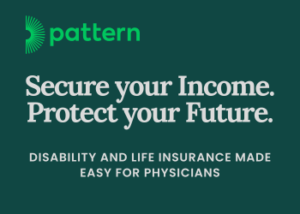The 2021 residency match “capstoned” the inaugural virtual interview season. Interviews may likely continue to incorporate some virtual aspects given the realized efficiencies. But these efficiencies come at a cost: limiting the applicant’s ability to get a feel of the programs and adding virtual fatigue to the inevitable stress of interviews.
As two medical students who participated in this most recent interview season, here are a few best practices we encountered on the trail.
Before the interview
Website. Update the program’s website and add relevant information that might have been previously saved for the interview day, including photos and bios of current residents, faculty and staff, rotation sites, rotation schedules, fellowships matches, videos, or standard slide presentations. The more, the better.
Social media. Instagram and Twitter are great platforms to highlight the program’s and residents’ achievements, including fellowship matches and research. Use them to give applicants a peek into the daily routine and the more social aspects of the residency program. Do not forget the hashtags.
Information sessions. These are new features of the virtual season we hope continue. One or two sessions during the summer and early fall provided an opportunity to interact with a program before applications. These helped clarify factors that were important to us and helped refine our application list. It was nice to hear from the program director, but sessions run by the residents gave the greatest and most frank insight. Short overview presentations followed by breakout rooms with rotating residents worked the best. Use your social media to advertise these sessions.
Interview scheduling. While it is understandably difficult to finalize the interview schedules far in advance, giving applicants a general timeframe as soon as possible is helpful, e.g., “Reserve 7 a.m. to noon” or “7-8 a.m. with interviews from 12-4 p.m.” Advanced notice helped us plan and ask for time off from clinical duties.
Pre-interview socials. These virtual events were when fatigue was most noticeable on both sides as the interview season progressed. Peers who interviewed at the same program two months apart received very different impressions from socials, likely due to fatigue. Taking advantage of the greater flexibility, social hours no longer have to be the night before the interview. The number can be reduced, and applicants can be allowed to attend any social hour at their convenience, before or after their interviews.
Breakout rooms with different topics and rotating residents most closely replicated the casual interactions with and between the residents. It was helpful when a casual dress code was emphasized, and applicants were invited to bring a beverage of choice to the event.
During the interview
Introduction session. Many programs sent out introduction videos along with the interview invitation and encouraged applicants to watch them. The videos made us excited about the program and our upcoming interview. Any included information does not need to be repeated during the introduction session.
Interview length and format. Fewer, longer interviews (at least 20 minutes) flowed better and were more likely to keep to the schedule. We preferred interviews with standardized questions assigned to each room, which helped limit repetition. Some interviewers were blinded to the applicant’s CV; some were not. No matter the selected format, clear communication about what we could expect helped us feel more relaxed.
Interview with the PD and/or department chair. Speaking with the leadership was a welcome opportunity to assess the direction and the culture of the program. This interview did not need to be long — a 10-minute interview worked quite well.
Waiting rooms. In between interviews, often there was a virtual waiting room with a resident(s) available. They were helpful in answering remaining questions, but to help minimize fatigue, emphasize that applicants may turn off their cameras or simply give the time back to the applicants and residents.
Noon conference, morning report, and grand rounds. These supplementary sessions were interesting, clearly relevant to our selected specialties, and gave more dimension to the program. It gave insight into the nature of the program’s education focus. Applicants can be invited to sessions that are not held on their particular interview day.
Post-interview
Thank you notes. A perpetual source of anxiety was heightened with the virtual season as each interaction carried greater perceived weight.
Programs can eliminate the guesswork and tell the applicants if they would like to hear from them or view thank you notes as inbox clutter.
Follow-up questions. Often residents would post their email addresses for further communication or questions in the chat boxes. A standardized way, either directly or through the program, to distribute contact information for follow-up questions would be helpful.
Virtual second looks. These events tended to reiterate the information presented at the prior events. Unless these are in person, this is one aspect of the virtual season that could be reconsidered.
Madhumitha Rajagopal and Jaclyn Yamada are medical students.
Image credit: Shutterstock.com






















![Rethinking patient payments: Why billing is the new frontline of patient care [PODCAST]](https://kevinmd.com/wp-content/uploads/Design-3-190x100.jpg)






![Why great patient outcomes don’t protect female doctors from burnout [PODCAST]](https://kevinmd.com/wp-content/uploads/Design-1-190x100.jpg)


